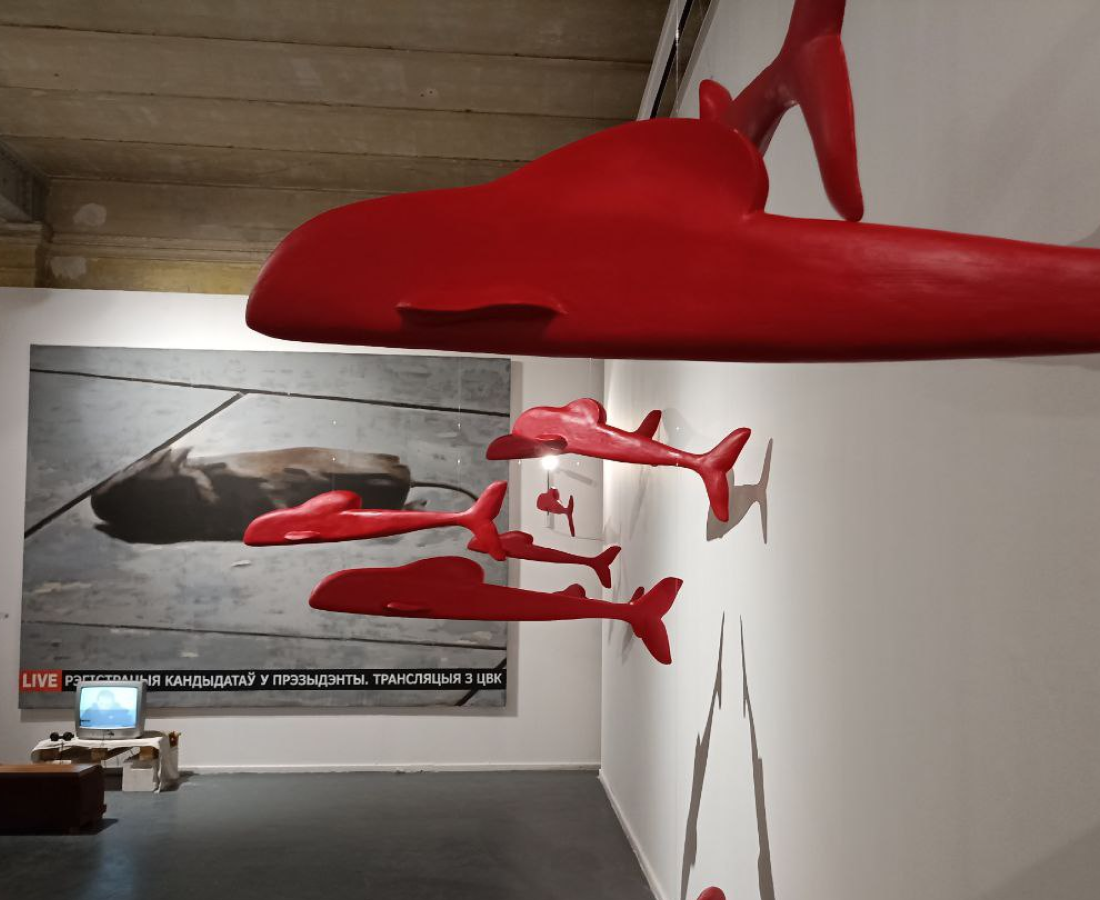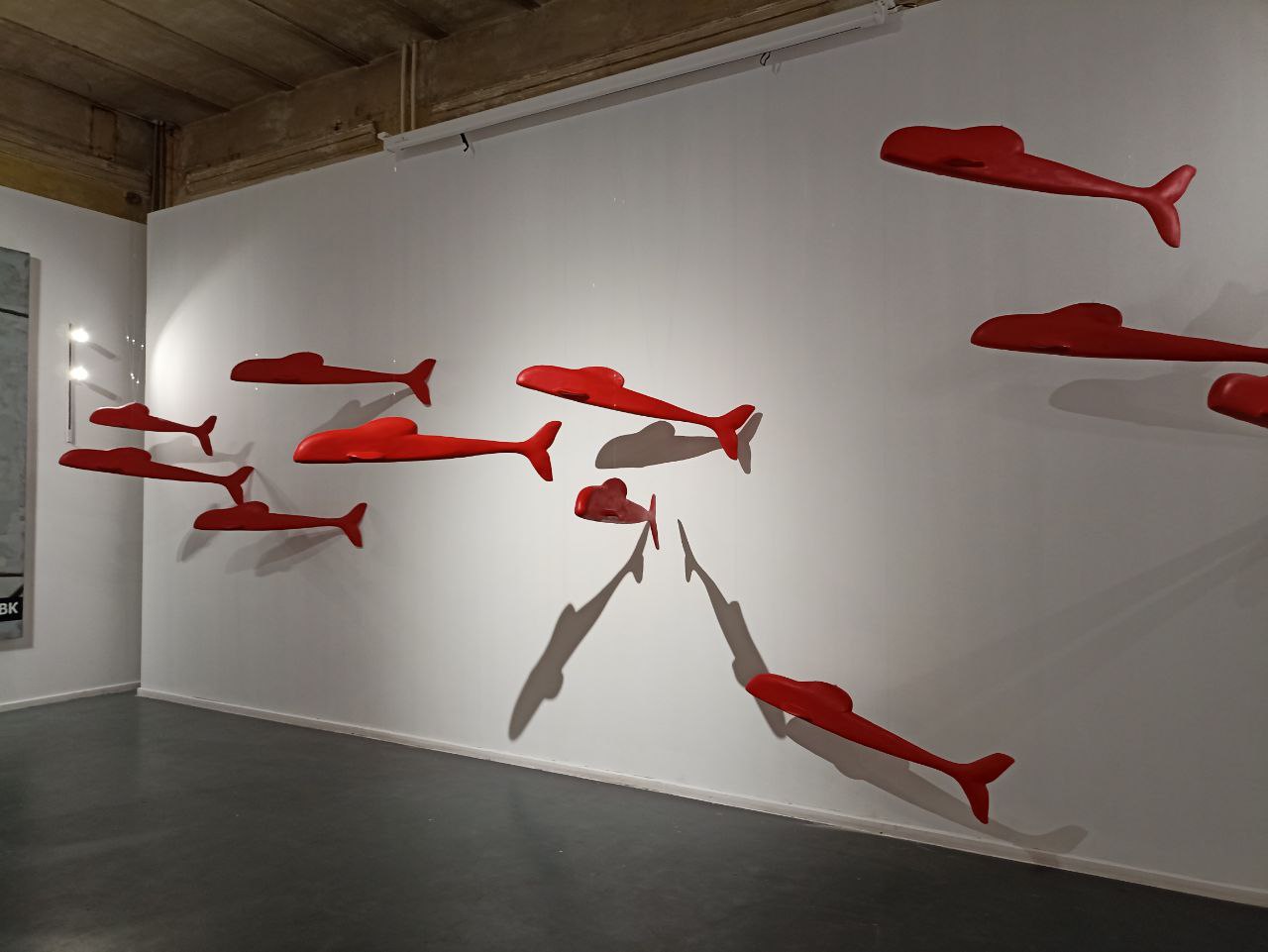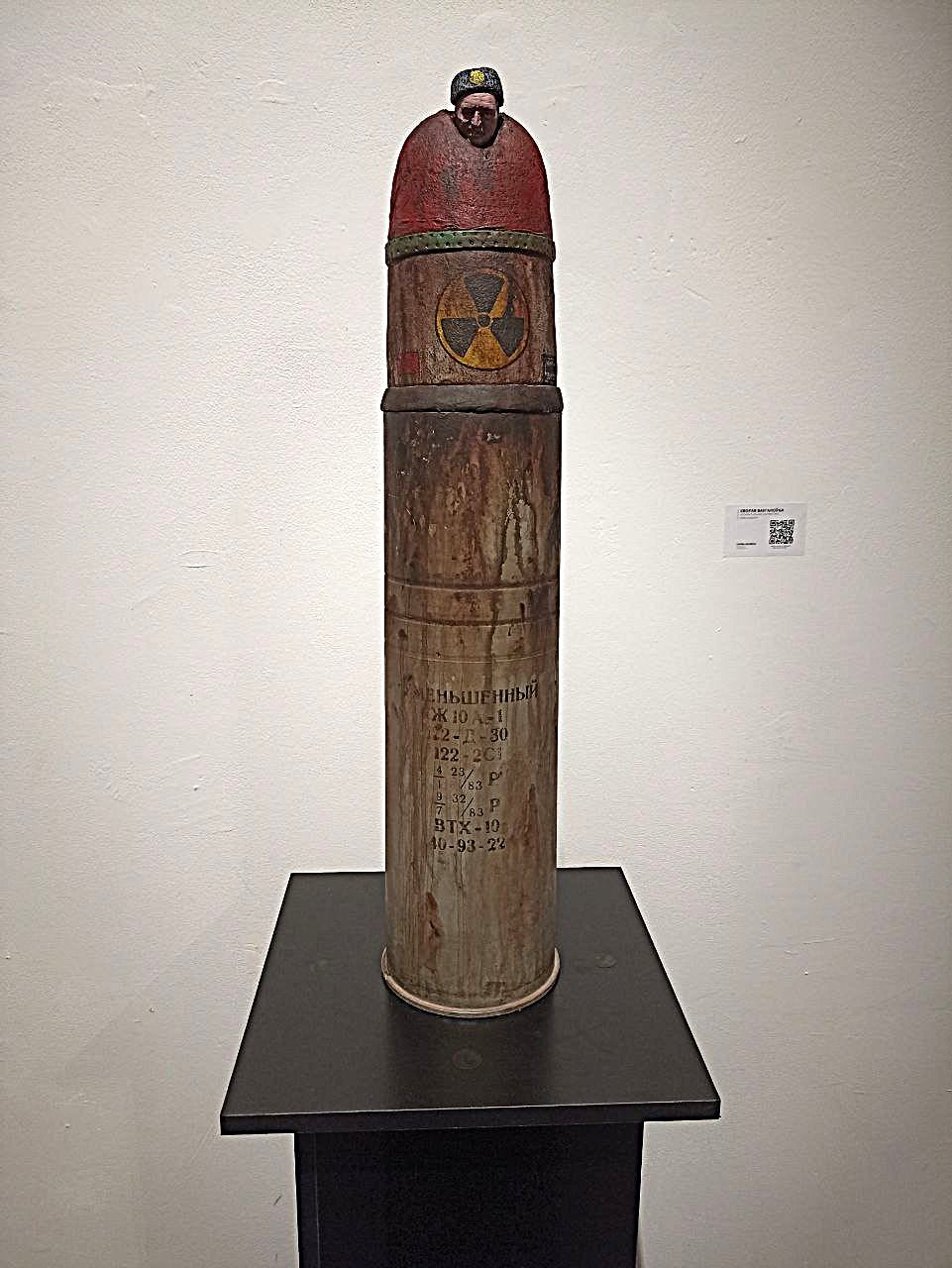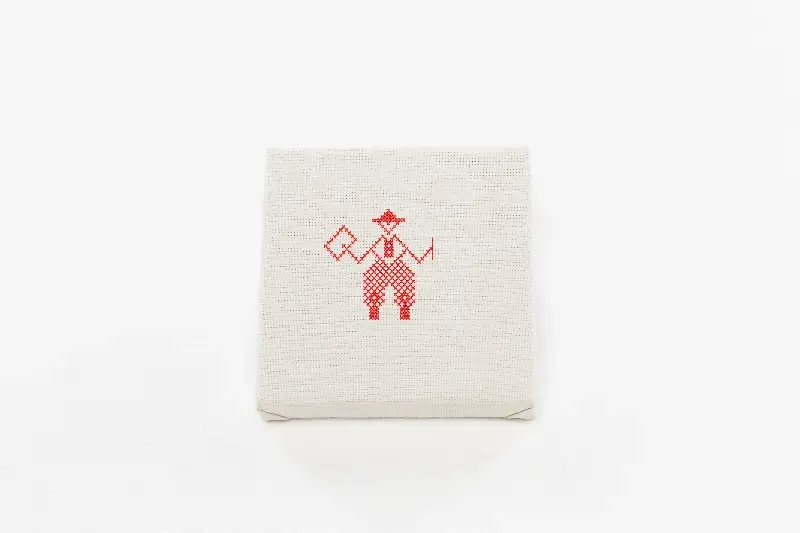
At the Museum of Free Belarus in Warsaw, an exhibition was officially opened on August 6, commemorating the 60th anniversary of the birth of artist Ales Pushkin. A small concert was also held in the museum’s courtyard.

According to the organizers, the exhibition is not only a tribute to the artist but also a collective reflection on what it means to “stay”: with oneself, with one’s roots, and with one’s dignity. For this exhibition, they selected works by authors who “in their creativity reflect on freedom, memory, and profound personal experience—in a language close to the spirit of Ales Pushkin.”

The exhibition is located in two halls of the museum. In the main hall, large-scale works were displayed, creating strong focal points and anchoring the entire exhibition. This includes Mikhail Gulin’s project “Sign”, in which the artist uses a television segment from the 2020 election campaign.
During Sviatlana Tsikhanouskaya’s registration, a predatory bird dropped a mouse to the ground. The artist recalled that a mouse was once used in state propaganda (he shows a fragment of a 2006 video from a terrorism suspect interrogation, in which a person talks about holding a mouse in a bucket and then pouring the water into the city water system) and amplifies it to gigantic proportions. In this way, the artist draws attention to the fact that we often overlook small details: “It is precisely these signs of fate, and the entire mythology, that are based on giving meaning to the tiniest details.”

The installation Migracion by Alyaksei Urublevski, presented as a series of large red fish floating in the air, evokes deep meanings and Christian symbolism. The image of the fish is one of the oldest signs of faith and spiritual journey. In this context, the red color represents sacrifice and renewal.
“This work is a homage to Ales Pushkin, who in his artistic practice often turned to religious themes. He skillfully intertwined the contemporary with myth, and myth with reality, raising everyday questions through the language of images and symbols. The installation continues this dialogue, embodying the idea of presence, memory, and spiritual resilience,” the artist notes in the description of his work.

In the center of the hall is another installation, “In the Skin of an Artist” by Yulia Mekes, an artist who explores the theme of identity in her works. “At the core of my research are my explorations of an idealistic Belarus. I strive to detach Belarus from the colonial influence of a neighboring country and place it in a purely international and multicultural context, where it truly belongs,” explains Yulia Mekes, noting that, like Ales Pushkin, she is driven by the desire to return Belarusian culture to the European context.

Images and symbols of the homeland are an important part of the exhibition. The works, created in various techniques and with differing levels of mastery, are united by love and pain.

Perhaps it is these emotions that are felt most strongly in the works. The symbolic range of these pieces is also wide — from the romantic landscapes of Andrei Dukhovnikov to the inverted perception of the Homeland after 2020 in Daria Kaliada’s photograph, and the symbol of losing one’s home in Sviatoslav Komarov’s installation.

Unfortunately, a “portrait of fear, encased in the shell of war” can also be added to the symbolic portrait of the homeland — Ilya Dudarov’s Sick Shell. The artist transformed a real artillery shell into a work of art. The shell had been used by Russian troops during the full-scale invasion of Ukraine and was transported to Poland as scrap metal.

A significant part of the exhibition features portraits of Ales Pushkin. Interpreted through the artists’ vision and in the context of his death in prison, these works create strong emotional highlights within the exhibition. The pieces from this exhibition are available for purchase and are being offered at auction.
Original article: reform.news